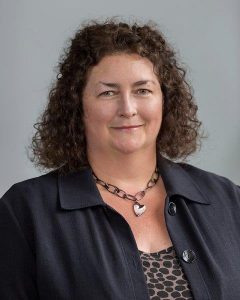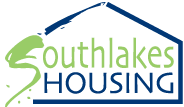Rural Housing Week
The Rural Housing Conundrum
 As the Rural Housing Week draws to a close I am buoyed up by the enthusiasm and energy I have witnessed of so many people and organisations committed to addressing the housing crisis in rural areas. This commitment was shown last year with many housing associations, councils and others getting behind the 5 star plan. This has gained momentum and this week saw the launch of the A manifesto for rural homes by the National Housing Federation and the Rural Housing Alliance. This seeks Governments commitment to support policies that help housing providers build in the right places, promote innovation including talking fuel poverty and respond to demographic challenges. Housing Associations are at the frontline of this commitment, promising to increase the supply of affordable homes in our countryside by working with and for the local community.
As the Rural Housing Week draws to a close I am buoyed up by the enthusiasm and energy I have witnessed of so many people and organisations committed to addressing the housing crisis in rural areas. This commitment was shown last year with many housing associations, councils and others getting behind the 5 star plan. This has gained momentum and this week saw the launch of the A manifesto for rural homes by the National Housing Federation and the Rural Housing Alliance. This seeks Governments commitment to support policies that help housing providers build in the right places, promote innovation including talking fuel poverty and respond to demographic challenges. Housing Associations are at the frontline of this commitment, promising to increase the supply of affordable homes in our countryside by working with and for the local community.
The Rural Housing Conference, ran by the National Housing Federation earlier in the week was an excellent platform to explore innovative ways to help achieve this. It provided a forum for interested parties to learn from good practice, share innovative ideas aimed at tackling the many barriers to development and to understand the complexity of the problem we are trying to grapple with.
This all resonated with me when thinking about the area I am privileged to work in. South Lakes Housing operates in both the Lake District and Yorkshire Dales National Parks and an area of outstanding beauty. We are upping our game in terms of new affordable housing supply. Having unlocked additional capacity through refinancing, we have plans to build over 300 homes within the next three years.
So, weve got it cracked then not quite! The simple truth is that building in rural areas is bloody hard identifying and purchasing the land, making schemes viable but genuinely affordable for local people, meeting planning restrictions and complexities and ensuring proper and meaningful consultation with local communities. Once we have factored in additional costs of construction and materials such as render and slate roofs it often looks like a non-starter.
It is hardly surprising when it is c20% more expensive to build in our rural areas than the in our urban settlements such as Kendal and Ulverston. The reality is that it is often easier to build somewhere else, particularly at a time where build numbers and cost per unit are under the spotlight. So, it is as important as ever that Homes England are committed to supporting higher cost schemes in rural areas and recognise the need for additional subsidy in rural areas.
Meanwhile the loss of affordable homes continues through the preserved Right to Buy. Right to Buy has been very successful for people who otherwise may not have been able to afford to buy a home in the village where they grew up in and have family networks. But new development over the last ten years has been limited and house prices have continued to rise at above rates of inflation and national house price rises. This has been exacerbated, particularly in the Lake District by the increasing number of second homes and holiday homes (where 18% of homes are second homes/holiday homes and in some villages, such as Coniston, its over 50%). As a result of this, the South Lakes area has seen an annual decrease in available affordable housing to rent for local people (in total SLH has sold 143 within the past 6 years and built or acquired 76 over the same period, so just over half replaced).
Thankfully we are working to turn this around it will be an uphill struggle in the area renowned for its beautiful hills. If you havent heard, the Lakes was named UNESCO World Heritage Site status last year, joining places like the Grand Canyon and Taj Mahal. This is big deal for Cumbria, with tourism worth an estimated £2.9bn for the regions economy and providing support for up to 65,000 jobs. We now even have our own currency! Naturally the World Heritage Status will bring much-needed benefits to the local economy but represents real challenges to affordable housing delivery. Average property prices are high as you would expect c£254k making our area one of the most resilient house prices within the UK. But average incomes are low in comparison (£27k pa) making income to house price affordability ratio of 10:1. For those on low incomes those who make the Lake District the tourist offer it is then incomes are £14k pa and a house price ratio of 13:1. Property prices rarely go down in the Lakes, thats the price we pay for the World Heritage views.
So, if we step up our game, we can make a really big difference to people, particularly young families who when priced out of the area tend to move away.
Our development ambition is centre stage of our Business Strategy. We aim to grow the number of homes we manage by 3%, of which around 130 will be in our rural communities. We are actively working with South Lakeland District Council to use their cheaper borrowing to support some challenging sites in the Lake District National Park and will welcome the support of Homes England in delivering these much-needed homes.
Its been a busy Rural Housing week but of course the hard work of local communities, parish and districts councils, housing associations and rural networks continues all through the year lest hope this time next year we will, collectively have achieved even more.
Rural Housing Week

The aim of the annual celebration (2 July to 6 July 2018) is to shine a light on how affordable housing can breathe life into rural communities, by bringing new customers and job opportunities that help keep open local shops or pubs that residents rely on.
Many Housing Associations across England have signed up to the 5-star plan for rural housing developed by the National Housing Federation with housing associations. The plan challenges the sector to increase delivery of rural housing and continue contributing to a thriving countryside.
< Back to News

